non-rated invasive companion plants
Everyone, I thought I'd share my whopper gardening mistakes. Just because no one mentions invasive, doesn't mean a plant may not be invasive.
My whopper mistake is gladiolus in a rose bed!!!! I thought I'd try to save anyone grief from this boo-boo. In my climate and soil conditions (heavy clay), Gladiolus is highly invasive. What started out as small walnut/chestnut sized bulbs triple quadrupled into clumped man-sized fists of bulbs with dozens upon dozens of pea-sized off shoots.
If one delights in this huge lovely flower, plant them in the most barren soil possible! Full shade, near the foundations of a house, anywhere that looks barren. They will still grow like weeds! Mine are sprouting very happily when I've already transplanted 63 of those darn things, lol! And I'm still getting crazy off-shoots in my rose bed.
Also in my garden, nasturtiums became invasive, lucky they are annuals, lol! They became monster plants that started pushing over Mr. Lincoln. Now their remnants are happily feeding my roses.
I am hoping that if anyone else has horror stories about non-rated companions that became invasive, it might save some of us from all this re-digging/re-transplanting headaches, so please share if you have any.
Comments (56)
jmur
13 years agoWow, if these are that invasive, perhaps even I could grow them. LOL
I've been considering creeping phlox, anyone have experience with this?ceterum
13 years agoBlack and Blue Salvia is very invasive just like bog sage. Evening Primrose is another very invasive plant we planted a few 15 years ago and we still could not get rid of the some of the remnants.
Related Professionals
Citrus Heights Landscape Architects & Landscape Designers · Wilmington Landscape Contractors · Clearlake Landscape Contractors · Elmhurst Landscape Contractors · Emmaus Landscape Contractors · Harvey Landscape Contractors · Haverhill Landscape Contractors · Huntington Landscape Contractors · Lemay Landscape Contractors · New Brighton Landscape Contractors · Newnan Landscape Contractors · Ridgewood Landscape Contractors · Tinton Falls Landscape Contractors · West Haverstraw Landscape Contractors · Ansonia Landscape Contractorsjardineratx
13 years agoMy "invasive mistake" has been alstroemeria psittacena. It forms little peanut-like tubers that are brittle and break off and are almost impossible to completely remove from the soil.
Mollyklynn24
13 years agoI love the look of artemesia (Powis Castle)and think it would complement roses nicely. Anyone had experience with it being invasive?
serenasyh
Original Author13 years agoCatsrose, huge apologies I forgot!!! to thank you for that excellent tip about watching for code words like "naturalizer" and species as a euphemism for invasive. Many perennial places try to hide the plants' invasive qualities by using this term. In fact today, when I was researching a beloved plant from a British gardener, I didn't find the term Invasive, but I sure found the term "naturalizer" or naturalizing used over and over again at various sites! And it was such a lovely plant too. Yikes! The blue version of "corydalis lutea" in his garden was so beautiful. Definitely it's a problem with nurseries when they just don't come out and tell it as it is with the word invasive! Obviously in England they don't have quite as bad as a problem with invasiveness as some of our locales. I noticed quite a few were growing invasive plants that would take over our gardens and their gardens are so immaculate and orderly....hmmmmmm
Another point is that many plants are famous for invasiveness, like mint, but others are a lot harder to find. Catsrose and Veilchen, if you know of any lesser known invasives, please let us know.
Another U.S. gardener like me has gazillions of gladiolus re-propagating itself over and over again! She's got a whole forest of gladiolus but luckily for her they are in remote corners of the garden. Harryshoe, you had me on my side laughing so hard. I can easily see myself hacking and clumping and axing those gladiolus, and still liking them. But sheesh, the gladiolus is so pretty! It's so hard to get rid of a lovely plant. Maybe in 2011 I'll be armed and ready hehe!
buford
13 years agojmur, creeping phlox creeps, but it will not reseed somewhere else. And it creeps slowly. You can also trim it down and transplant the parts you remove somewhere else and start a new patch. I love it and have it all over the place.
lesmc
13 years agoI will be chopping...digging...round-uping lily of the valley till the day I die! I had no idea it would take over. I only thank goodness I did not put it into any bed with roses.I was an idiot! I hope I learned to never again do that!!
kathy9norcal
13 years agoIn my mild climate, gladioli are a nightmare I will never get rid of. Also, don't ever get those pink Mexican Primroses. They will haunt you for years.
I like blue veronica.
Kathymori1
13 years agoserenasyh
From your picture I can tell that you have the winter hardy glads. I know because I grow them. I have that color plus one that is red or dark pink in color. I've been growing them for 6 years and I don't have many bulbs as you. Of course I let mother nature take care of them.
veilchen
13 years agoDon't ever plant:
Physostegia (obedient plant)
Oenethera (evening primrose)
loosestrife of any kind
bishop's weed
violetsWatch very carefully, can colonize:
Japanese anemone (lovely fall plant but give them about 3 years and they want to take over the world)
Oriental poppy (the common orangish red one)These are my battles. All of the first list are still present at my client's despite days and days of digging over the course of 7 years. They laugh at Roundup. One year smothered them all with cardboard and mulch. Took care of the problem for that year, but the following year after the cardboard rotted, bits of roots in the soil must have been able to regenerate and they were back.
She wanted Oriental poppies, we planted two, and now 5 years later they are all through her border. The anemone is my own mistake in my garden. I finally dug them all up last fall, put cardboard down, and am being vigilant for any shoots that are escaping. I did save a double version that I think I will try planting in a pot dug into the soil.
sammy zone 7 Tulsa
13 years agoSt. Johns Wort (Wart) is invasive. I agree with the Evening Primrose, and mint is my biggest mistake. The roots are huge, and they came up all over my yard. I ended up pulling out my pretty Homestead purple verbenas just because they looked like mint.
I really appreciate the other suggestions since I do need more companion plants.
Sammy
newyorkrita
13 years agoI have planted Gladiolas for years. They are supposed to be dug up here but they do overwinter if planted deep. They certainly are not a problem, they don't spread or othyerwise become a nusance.
serenasyh
Original Author13 years agoVeilchen, thanks so much for the list and for the lesser known invasives like your anemones. It's the lesser knowns which are my greatest concerns because not enough information is out there to know for sure.
Veilchen have you ever heard of Agastache-sometimes known as hyssop? That is a plant that bees are supposed to love, but it may or may not be a borderline case. I have 9 of these things just sitting by my windowsill waiting to be planted, lol! they say Agastache only invades if you allow them to seed. Have you ever had problems with this plant? A wonderful gardener grows hers with the roses but they died from the winter so she doesn't know for sure if they will ever "invade".
Rita, in certain gardens Gladiolus are a huge nightmare! Even my most barren areas where I planted them are sprouting like crazy now. It is ridiculous! For both Kathy, Nanine, and I, gladiolus are rampant weeds. Mori, my gladiolus was rated as zone 8a on the packaging and remember I have two types. One is the pink, the other is the conventional gladiolus. Maybe the package made a mistake and only mentioned the orange one as the zone 8a gladiolus, but both are vigorous nightmares for me.
the other variety I have (from Costco)
The more Spring advances the more and more spears keep popping up. I feel like Harryshoe with his Blackeyed Susan Rudbeckia.
serenasyh
Original Author13 years agough, I meant:
Veilchen, have you ever had to deal with Agastache in your clients' gardens? Sorry, I made a boo-boo, of course you would know about agastache since you're a landscaper. It was a miswording and GW doesn't allow me to edit my silly errors. Much apologies!
kentstar
13 years agolesmc, I know what you mean! I planted Lily-of-the-valley a couple years ago. Last year no popups, but this year I found a couple that were far from the bed I put them in! Thankgod I didn't put them in the rosebed! Now I'll be pulling them out of the lawn though! The least they could do for me is bloom! Last year they didn't bloom, but I have a feeling that will be changing soon.
veilchen
13 years agoNot a landscaper, a gardener! That is funny about the agastache, people saying it can be invasive. I suppose it could in its native climate out west. I saw pictures of it in magazines and really wanted to try it but they are never for sale around here. I thought it would look good with the roses. So I ordered some seeds and started them myself. Planted them out in the garden, they bloomed that year, albeit later in the summer than their normal time. But unfortunately none of them returned after the winter. And it was a fairly mild winter with lots of snow cover. So I would say they are definitely borderline hardy to zone 5. They also like drier conditions. They might do better for you, as it can be very wet here. I doubt they can be invasive in zone 5 anywhere. Maybe warmer, drier zones.
bethnorcal9
13 years agoWow, interesting experiences all around. Glads are supposedly winter hardy here in my area, but I can't get them to come back more than a second season, and they're whimpy. I love the "creepy" phlox. I have a nice lt blue one cascading over the edge of one of my big pots. Invasive plants that I have are many of the salvias, altho "Black & Blue" isn't one of them. "Hot Lips" isn't one that spreads, but it just gets so tall and wide and penetrates out into the bed and walkway. I have to chop it down to a nub every so often. My worst problems are the naturalized wild violets, the dang chocolate mint I stupidly planted in one bed, some of the euphorbias that spread like crazy, the hypericum (St John's Wort) that was here when we moved in and impossible to eradicate, the centranthus rubra, and the variegated artemesia. I also have a lovely plant called tracheleum caeruleum, which I actually really like, but it does spread by seed and fills in everywhere. It looks great until the blooms are done and then you have these big ugly brown "heads" that need to be chopped off. Oh and the wood hyacinths that came out of nowhere, but at least they die down by summer. And the dichondra that keeps coming back in a couple of the beds out front. My absolute worst nightmare tho, is something I didn't purposely plant and it isn't a companion plant, but since we are talking about invasive stuff.... why would anyone voluntarily plant Bermuda grass? We accidentally brought a small batch with us from the old mobile home park, when we moved my potted roses. I will be fighting it the rest of my life!!
mori1
13 years agoserenasyh,
I looked at the package but the picture you showed me is exactly the color of one of my winter hardy glads. Any other glads I've grown never made it through winter. Mixup are not uncommon for big change stores.
serenasyh
Original Author13 years agoThanks so much Veilchen for your expert opinions and advice! Well, time to take the agastache out to the roses, lol! and keep a sharp eye on them. I will let you know if they become invasive next year. Yes, they do look so gorgeous, that is why I am soooo tempted! In my rose bed garden, all the companions except for the common herbs get huge, so we will have to wait and see what happens with the agastache. Only orange thyme and the italian oregano remain tiny clumps. They probably hate my heavy clay soils, but the rest go gangbusters.
Kentstar and lesmc, who could have guessed that such a tiny, itsy bitsy plant can wreak so much havoc, lol! My mom was showing me some lily of the valleys from her friend, and I took a whiff and said ooooo, that is some gorgeous fragrance, a winner of a plant, hahahaha! Little did I know, hehe!
Wow, Beth, some people will find your list so helpful too. Artemisia is a highly decorative plant that could likewise tempt someone only to have a nightmare on their hands!
maryann_va
13 years agoWe never planted agastache, but we've got it.
We never planted forgetmetnots (myosotis?), but we've got it in spades.
Previous owner planted glads - they keep coming back and my husband wants them gone.You know those plants they call "stepables"? They make me shiver and cringe. I've made lots of mistakes (or dear husband has - he's responsible for the labrador violets that are taking over the area under the pine trees - but at least they like like dry shade.
I planted four o'clock seeds, and 2 years later am still pulling them up.
Muscari! Ay yi yi. I must have pulled up a thousand tiny little bulbs this spring, and there are still more.
I have thyme in my main rose bed, and even though it will spread, it's very easy to trim or pull up, and the bees love it. Also in the rose bed: bearded and siberian iris (have to be divided regularly), and around the edges, lavender, germander and santolina.
buford
13 years agoWhat ever you do, don't plant morning glory. I just pulled up about 100 seedlings today.
veilchen
13 years agoForgot forget-me-nots (how could I?)! Yes they are the prettiest little things but once you plant one you'll never get rid of them. I swear they not only spread by seed but by roots. I have been pulling them out for years all over my entire one-acre yard nowhere near where I planted the original. I pluck them out and they seem to reappear overnight.
texaslynn
13 years agoInteresting.....I've never had any problem with glads at all! I have had those little bulblets come up sometimes but I just pull them out and that's it.
What has been a big problem for me are rain lilies. They come up everywhere and most of the time you have to dig them out (they don't pull out very well - just break off and the bulb lives to see another day).
Some plants are invasive pretty much everywhere but a lot of them are only invasive in certain regions.
Lynn
flowergirl70ks
13 years agoNever plant Stars of Bethlehem!!! Worse than bind weed, impossible to kill, same with grape hyacinths. I fill my garden cart every spring and they just keep coming.
Glads live over in the ground here, but not hard to get rid of. Lily of the valley, johnny jump ups, plumbago, all bad news here. Anything with a square stem is bad here. I could furnish the world with monarda.lovemysheltie
13 years agoFab post! I will admit I am tempted to get the glads from Costco and go plant them in my full shade area where nothing ever grows. They can go crazy there all they want!
On the other hand, I picked up a packet of morning glory 'Grandpa Otts' from HD yesterday and was thinking of planting it to twine up one of my patio pillars (refer to my post on Climbers for patio pillars). Seriously questioning the wisdom of that now. Perhaps I could plant in a pot and then let it twine along the pillars...
Amen on the ivy hate. I abhor my neighbor's evil ivy that wants to take over my beds. There ought to be a law against people planting known invasive things along fence lines. GRRR!
sybilla
13 years agoThis is a fabulous post, because "invasive" is never on a plant's description and you have to always be on the lookout for "vigorous", "easy-care", "good for naturalizing" and "species", all of which seem to stand for "will take over in no time".
I echo Lily of the Valley, which seems impossible to eradicate - dandylions are easier to control! And what I think is muscari (compliments of my neighbor... that's how far-reaching it is!) is worse than crabgrass.
Thanks to everyone for the alerts, although I too am tempted to put glads on my north side where even grass won't grow :) :) :)
kentstar
13 years agoMy myosotis spreads quickly! But it is gorgeous anyways. It may be invasive but it looks wonderful under all my roses and clems.
{{gwi:260860}}
reg_pnw7
13 years agoInvasiveness varies with region and climate and soil and a lot of things. Things that are horrible invasives in one area are treasured well-behaved garden plants in others. Cytisus (broom) is a perfect example. Here on the West Coast it's one of the worst invasives ever, I call it the 'kudzu of the Northwest'. It doesn't just spread everywhere, it completely takes over entire ecosystems and makes them uninhabitable for native species, pushing some plants and animals to local extinction. Egg-laying snakes have been extirpated from western Washington lowlands because of, largely, Cytisus invasion. But on the east coast and in UK it's a treasured ornamental.
Gladioli have never ever given me any problems with spreading. They persist, but they don't spread. Myositis is a huge problem in the San Fransisco area, but I hardly ever see it here. Ditto Jupiter's beard - I know I saw its Latin name in someone's post on this thread but can't recall it now! Morning glories freeze and rot here over the winter, I've never seen them get out of control. And some things it just would never occur to me to plant with roses, like lily of the valley, as it's a deep shade plant here. But I'd better add nasturtiums to my list! forgot about that one since I don't like it anyway - the aphids, you know, and can't stand the smell.
Here's the list of plants too invasive for rose gardens that I just posted on our RS website:
Arrhenatherum, oatgrass
Arum
Buddleia
Centauria montana
Cortaderia, pampas grass
Crocosmia, montbretia
Irises: stinking (I. foetidissima), walking (Neomarica gracilis)
ivy
Lychnis coronaria, Maltese cross
Monarda, bee balm (mostly just because it mildews and flops)
Muscari, grape hyacinth
Pennisetum, fountain grass
Phalaris, ribbon grass
Phygelius, Cape fuchsia
Physostegia, obedient plant
Romneya coulteri, Matilija poppy
Rubus calycinoides (pentalobus)
Scilla, bluebell
sedums
strawberry
vincaceterum
13 years agoIn defense of some of invasive plants...
We had a lot of forget- me- nots and violas (plants that local experts say 'don't even don't even dream about them growing here) and my DH weeded them out to my regret and furry.
Instead, now we have obnoxious weeds in their place that require weekly work and they are surely ugly, self-weeding nuisance all over the place and would demand daily maintenance that we cannot do anymore. And DH is far from being such an enthusiast to weed out the true weeds - it is maddening.
To sum it up, some 'invasive plants' if you find the proper place for them, could be very handy. Mint is not among them, nor is Houttuynia (Chameleon) - this last one is very nice if you have a huge area where you are able to confine them and make sure that it will not escape; otherwise even to take it out is sickening; the thick roots smell awful.
So I dream about violas of any kind (Tasmanian violets or whatever of the groundcover types that would form a dense mat and choke out the weeds in a few years. Alas, I cannot find them anywhere. (I guess I should try to trade for other's discards or pay for shipping in the hope acquiring a few - some people's trash could be my treasures).
kadasuki
13 years agoI think that Hollyhocks can be a huge problem, they never die and cast seeds everywhere.
The Paper Lanterns, ugh!
Lemon Balm, as a mint should only go in pots.
Sun Chokes, what a huge mistake!
Missouri primrose (pink)All these are impossible to eradicate.
odyssey3
13 years agoI don't know about Powis Castle, but Oriental Limelight artemesia has been horribly invasive for me--spreads everywhere, I need to try putting some in a pot and burying the pot to see if that contains it. Guess where I bought mine? Our Botanical Garden's plant sale. Shame! They should know better!
Terry Crawford
13 years agoCHAMELON plant....pretty to look at; sends underground runners and comes up everywhere!
serenasyh
Original Author13 years agoCeterum, I hate to say this, but you do have your husband to thank your lucky stars! Believe me give it a few years to really work in and you will be tearing out your hair. There is a reason why! those things are not sold. Invasive plants will not stay in your "weedy" area, they will grow right where you don't want them!!!! and worst of all they will kill your habitat if you allow them the opportunity. Certain invasives are outlawed! Be sure to check your own state's listings of the outlawed plants...
There are kinder invasives like bee balm, which is another great one for an area you want taken over and will attract the bees to your garden. But as experts like Veilchen says, STAY AWAY FROM THOSE VIOLETS!!!! You will REGRET IT!
And another thing I have to really warn people about is Beware of freebie perennial plants. Bless one of the vendors I buy from, they have excellent customer service and high consumer ratings, etc. but they gave "bonus" seeds away, and yes, you guessed! All 4 had high invasive ratings, lol! So if you ever get bonus seeds, do your Google research first!!!
Terry Crawford
13 years agoI dunno...I like violets. I grow them in my shade gardens...they are NOT invasive there and they get along good with the hostas and ferns. They have co-habitated happily for 15 years. I have them in the violet & white colors.
sylkiestrands23_yahoo_com
13 years agoIt would appear that Periwinkle is taking over here. Landscapers planted it under our raised deck. It isn't in our lawn but we have unlandscaped land out behind the house/lawn that has a creek. There are plenty of trees and they haven't leafed out yet. Everything is just coming out of dormancy so it's easy to see down to the creek. I see the Periwinkle slowly crawling it's way towards the creek. I am not sure if it was planted out back along the fenceline or if it was somehow naturally seeded. (Birds? Pets?) In any case, we have it and quite a bit of it. I have mowed it to the ground and sprayed and sprayed and mowed. Still around and doing well. It appears it is going to take some patience.
sunnysideuphill
13 years agoanemone sylvestris! White flowers, very pretty, 15" high foliage, spreads underground. A friend's wife gave me a clump of it back in 87 - I have colonized whole hillsides with it. But only on "waste" ground - it's been out of the flower beds for decades, but still pops up. I had a brand new bed, where there had only been lawn, and transplanted a rose from the edge of the "wasteland" - and must have had a piece of the root with the rose, because now it's in the new bed....
But is does great duty as a fast filler of bare spots....jacqueline9CA
13 years agoPeriwinkle (vinca) is a famous invasive in CA, especially vinca major. It still exists in areas that were old homesteads, even when the home has been gone for over 100 years! In fact, that is one way you can tell where old homes were sited in areas such as the Gold Country - where the population was higher in 1855 than it is now.
I grow vinca minor (not as invasive) in one large bed. So far it has stayed in that bed, and I like it because it does allow bulbs to come up from under it. We have it planted with a ground cover "african daisy" which also spreads. One likes sun, the other shade. It is funny - they take turns dominating the bed, depending on the season and amount of light they get.
To my surprise Iris Foedita has turned out to be invasive around here - at least in my front garden. It escaped from the rose bed, and now our lawn is about 20 percent iris foedita. My husband just mows it, commenting that "it is green", after all.
Jackie
floridarosez9 Morgan
13 years agoOxalis (green with lavender blooms, not burgundy with white blooms) has been a nightmare. Cat's Claw, a vine with exquisite yellow flowers, is awful in Florida. It's impossible to kill and seeds everywhere.
ndavison84k_comcast_net
13 years ago. I have a bulb coming up under my roses that puts out a small cluster of white flowers on a roughly 12in long stem. The leaves are green all year and the flower comes out in spring. They have multiplied so rapidly that they are now all in my lawn of Bermuda grass. What is it? I have no photo at present.
ronda_in_carolina
13 years agoStar of Bethlehem??
Here is a link that might be useful: Stars of Bethlehem plant
jacqueline9CA
13 years agoNatalie - does it smell like onions? Around here (zone 9, No Cal) "wild onion" is everywhere, spreads madly, and is very hard to get rid of. You can eat it - it is mild onion, but not fast enough to get rid of it!
jackie
stealthq
13 years agoI have never-ending battles w/ ivy, and morning glory. One invasive that was surprising to me was Indigofera kirilowii (sold here as 'Chinese Baptisia'), that was supposed to stay at 2' x 4'. Perfect, I thought, since I have small beds. We were warned never to transplant them because they hate being moved. Oh, really.
I planted two. Next spring, I had to move one. It was back full force in a couple of months. The other was already 2' x 4' and not only was it still spreading, it started sending out runners. But, the plant was beautiful, so I just pulled them and let it go. By the second year, both plants were sending ~20 runners out as much as 8' away from the mother plants. Pull them up, and a month later there were 20 more. So, I SP'd both plants. This year I've already pulled 10-15 new plants that sprouted from the remnants of the roots.
peachiekean
13 years agoMint! As some of my roses grow in a vegetable plot, I am constantly battling with mint. The underground runners are the most invasive plant I have to deal with and I had to move my Jude the Obscure as it was being choked out and I could not get in and around it without being attacked by thorns. Now I am digging, and spraying Roundup on the stuff as it pops up. Impossible I'm afraid. At least the poor rose is in a much better location and doing well. Others I will have to kick myself for planting:
Catmint (I love it but it's reseeding everywhere)
Aslepcias for monarchs (ratty looking and invasive),
Black & Blue salvia (hummingbirds love it but the tubers are way too vigorous)
Chinese garlic, given to me by a fellow gardener which I graciously accepted. It's tough to dig up but this year I will remove it.amandahugg
13 years agoMy old garden was plagued with Borage, Evening Primrose, Alstroemeria psittacina & Nothoscordum (small wild onion). When I moved (20 years ago...yikes!), I swore these pests would never be in the new garden. Yet both the Alstroemeria & Nothoscordum have reappeared to haunt me. And then I made the stupid mistake of planting Houttuynia cordata (the non-variegated form) whose foliage smells like a cross of an out-house with cilantro & Oxalis purpurea which looks so pretty under the roses in the winter months but watch out! As my Grandma would say 'Live & learn...die & forget it all'.
bohlenn
12 years agoI'm having a horrid time with Italian Arum and wild onions, not to mention bindweed and bermuda grass, here in northern California. Any clues on eradicating the arum? My experience is that when digging, even leaving a tiny piece of root produces clones galore. I'm suspicious that these tiny webs of white roots are the next source of invasion. I really don't want to use Speedzone or Roundup, since the arum is all around my food crops. Any ideas?
annikasmommykate
12 years agoI must say, there are quite a few plants on others invasive lists that I wish would thrive for me!
I have two types of gardens on my property; my formal gardens and my wild gardens. I try and keep the invasive plants to the gardens that I let run free (along the borders of our woods). It's nice to be able to put things in and not have to worry about them. When it's just invasive varieties, they do battle with each other and there's no room for conventional weeds to grow. Works for me :-)
I would never be able to tend everything if I kept well behaved plants in all of my beds. That grand plan allows me to have time to tend my formal beds (and work in my mothers garden, and our hospice house garden, and do garden jobs with my mom). Gardeners should get an extra few hours a day in the summer time :-D
Spectrograph (NC 7b)
7 years agoI have a north facing hillside that I'd prefer to not have to weed.
Bermuda grass and sheep sorrel (two really horrible rhizome spreading
nightmares) are endemic in my neighborhood. So I've planted all tough
plants that can compete back, and with each other. Some posters
complain about rudbeckia black eyed Susans being invasive, but mine are
struggling against the evening primrose and Bermuda grass:
This
was in May, when the primrose was all in bloom. Now daisies and
echinacea are blooming, and they are too large to go down in the sea of
invasives. The grasses as well are quite tough and hold their own.
Gaura is the one plant I wish I could get to thrive here, but it's had
trouble. Summer heat and drought tends to beat down the smaller
invasives and lets the larger, tough grasses and coneflowers and daisies
cement their place. I've released mint on this hill, as we churn
through the fresh herb for cooking, but it has had trouble taking off.A month later, the beginnings of the echinacea flowers:

jacqueline9CA
7 years ago"Invasiveness", like many other things, is LOCATION DEPENDENT. So, don't take statements about whether a plant is or is not invasive from anyone in a different climate than where you garden. You can look up lists, usually by state, of whether plants are thought to be invasive or not. Also, there is a difference between plants which will likely escape from your garden and spread into natural areas, or plants which are just thugs, and may take over a bed, but don't survive in the wild.
Location, location, location - just like real estate. Many catalogues have lists of states where they will not ship a particular plant listed after the plant - those are states which have determined that plant to be invasive. Frequently these are warmer weather states, where there are no cold winters to control the spread of a plant.
Jackie
modestgoddess z6 OH
7 years agohttp://dnr2.maryland.gov/wildlife/Pages/habitat/wagroundcovers.aspx
Reccomended ground covers from the state of Maryland, also lists invasive plants to avoid
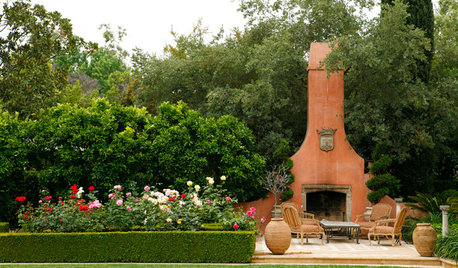

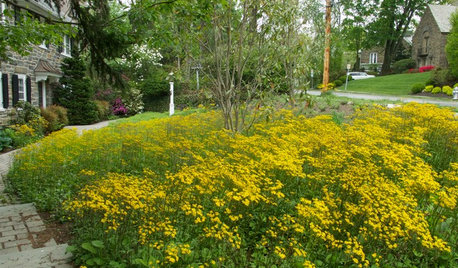

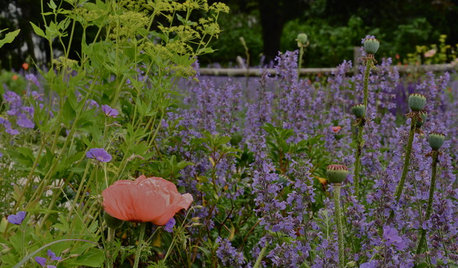
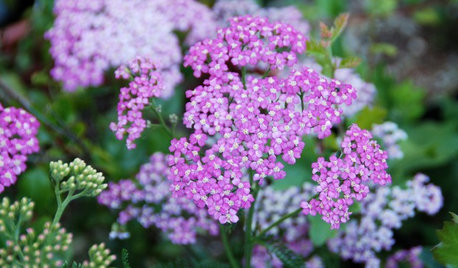
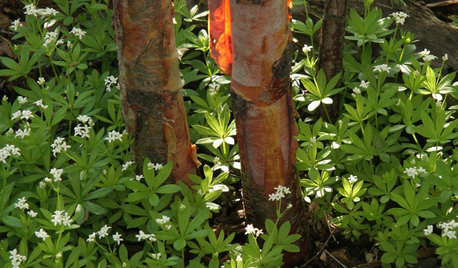
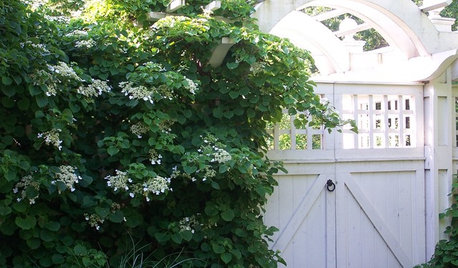

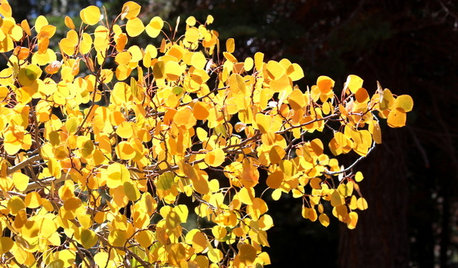






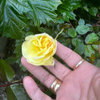

cindyandmocha